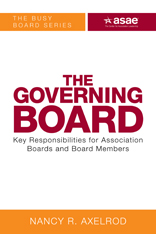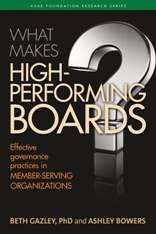An essential pillar of governance
Board structure is one of the essential pillars of governance, along with strategy, culture, and operations. It represents the “hardware” on which governance processes run. Key elements are usually documented in the organization’s bylaws. Considerations include board size and composition, term of office, role of officers and executive committee (when applicable), committees and task forces, and board selection/election. In some cases, the governing structure may also include a house of delegates or representative assembly.
Structure is the governance aspect most frequently studied benchmarked. It is also the one set forth at the founding of the organization. Because of this, many association leaders view their structures as inflexible, outdated, and out of synch with the current environment. It is important to note that structural elements vary from organization to organization, based on the organization’s history, industry politics, and professional culture.




